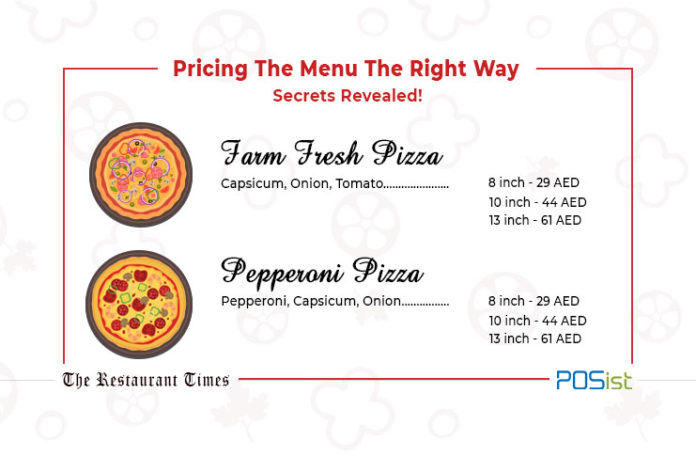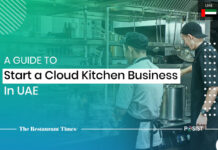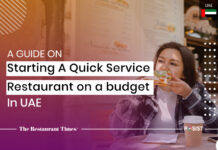Designing a menu is one of the most interesting tasks of running a restaurant, but is also the most critical one. It is rewarding to see it coming together. You can play around with the names of the food items and also the look of the menu but, one thing you need to be careful about is pricing the items correctly. Correct restaurant menu pricing keeps the food costs in check and fuels the restaurant’s success and keeps its doors open.
The cost of raw materials is pretty high in the UAE since up to 85% of the food is imported. This leads to high food costs, which in turn, affect your profit margin. Thus, it is essential that you employ proper restaurant menu pricing techniques so that you are able to cover your costs, and still make a decent profit margin. In this article, we will discuss the menu pricing methods that will help you price your menu right!
How Restaurant Menu Pricing Affects The Gross Profit Margin
The gross profit margin for a restaurant is the money they are left after covering all the business expenses like electricity bills, occupancy rent, purchasing raw materials, etc.
To calculate the gross profit percentage, you can divide the expense into three major categories, food & beverage, salary, and occupancy.
You can calculate the gross profit margin using this formula:
Gross Profit Margin = (Revenue from sales – Cost of goods sold) / Revenue from sales
It is essential to maintain a good gross profit margin and calculate the financial metrics to ensure the restaurant’s success, and the right menu pricing would ensure that.
Restaurant Menu Pricing Techniques To Run A Profitable Business In UAE
Here are some of the things you can keep in mind when pricing the menu items to elevate your gross profit margin.
1. Calculate The Food Cost Percentage
The food cost percentage is the percentage of your sales you spend on food. It is a significant number to identify before you start pricing the menu, it would give you the base price, and you can use this as a reference when pricing the menu items. To calculate the Food Cost, you should first identify the ingredients on which you’re spending to prepare a menu item. List down all the ingredients, from the rice to the raisins, and the money spent on preparing the menu item. Next, divide the total cost of goods sold by the sales generated from selling that item.
You can calculate the food cost using this formula:
Food Cost = Cost of goods sold / Food sales
This would tell you how much money you make when spending a certain amount in preparing a dish. This menu pricing formula is something every restaurateur should keep an eye at!
Ideally, your food cost should be around 28-30% of your selling price. For instance, if you are spending 30 AED on the cost of ingredients to prepare the dish, you should be charging 100 AED for the same.
If your food cost is high, either you should try to cut down the cost of preparing the item by reducing wastage or think of hiking up the selling price of the menu items.
3. Consider The Market fluctuations
Market prices of raw materials fluctuate depending on various factors like natural calamities, reduced crop production, seasonal slowdown, etc. This can affect the profit you yield from a food item listed on your menu.
Although the price listed on the menu remains the same, the fluctuation in the market price decides if that dish would earn you profit or not. For a restaurant owner, it is difficult to keep editing the menu price every time there is a fluctuation in the market price; therefore they should keep this in mind and price the menu accordingly. You can set the price a little higher to allow space for a price cushion.
This would ensure if there were to be a hike in the price of the raw materials or reduced footfall, it wouldn’t affect the gross profit percentage much.
4. Know Your Customer Base
The restaurant owners should know the type of customers they wish to attract. UAE is fast emerging as one of the major global food destinations, and residents and tourists alike are willing to spend more on eating out at restaurants. Considering this, you should keep the Average Spending capability of your customers in mind while deciding the price of your menu items. The menu pricing should be right, and in accordance, to the customers, you want to or already serve.
In the end, it is your customers who keep your restaurant’s doors open which makes it crucial to price the menu and cater to your client base correctly. Knowing your customer bade is one of the best menu pricing methods.
5. Compare With Your Competitors
UAE’s restaurant market is highly competitive with almost 9,189 restaurants in Dubai itself. It makes it crucial for a restaurant to have competitive menu prices. It is imperative to test the waters before you start pricing the restaurant menu. Check how much your competitors are charging for the dish. This will act as a reference amount which you can take into consideration when pricing your menu.
For instance, if you are opening a restaurant where street food is popular, and customers have cheaper options available, they will automatically take their business elsewhere.
It is vital for you to analyze the market price and see if you are charging your guests right. If you are charging more for the same dish, people might not prefer dining at your restaurant; therefore you should have competitive prices that will keep the customers at your doorstep. Comparing your menu pricing strategies with your competition is a great way of ensuring you are serving the food at the right cost!
Restaurant menu pricing can be a daunting task especially in UAE where most of the raw material is imported and the food is quite expensive already. These points are the very foundation for pricing the menu correctly. If done the right way, it would ensure that your customers keep coming back for more. These points would help you in keeping the cost down and sales up.

















In the restaurant business, the art of pricing food starts with the science of costing food, the adjustments and fine-tuning is how a restaurant owner nails the art of pricing and balancing expenses. Very comprehensive and well-written article. Great work Restaurant Times.